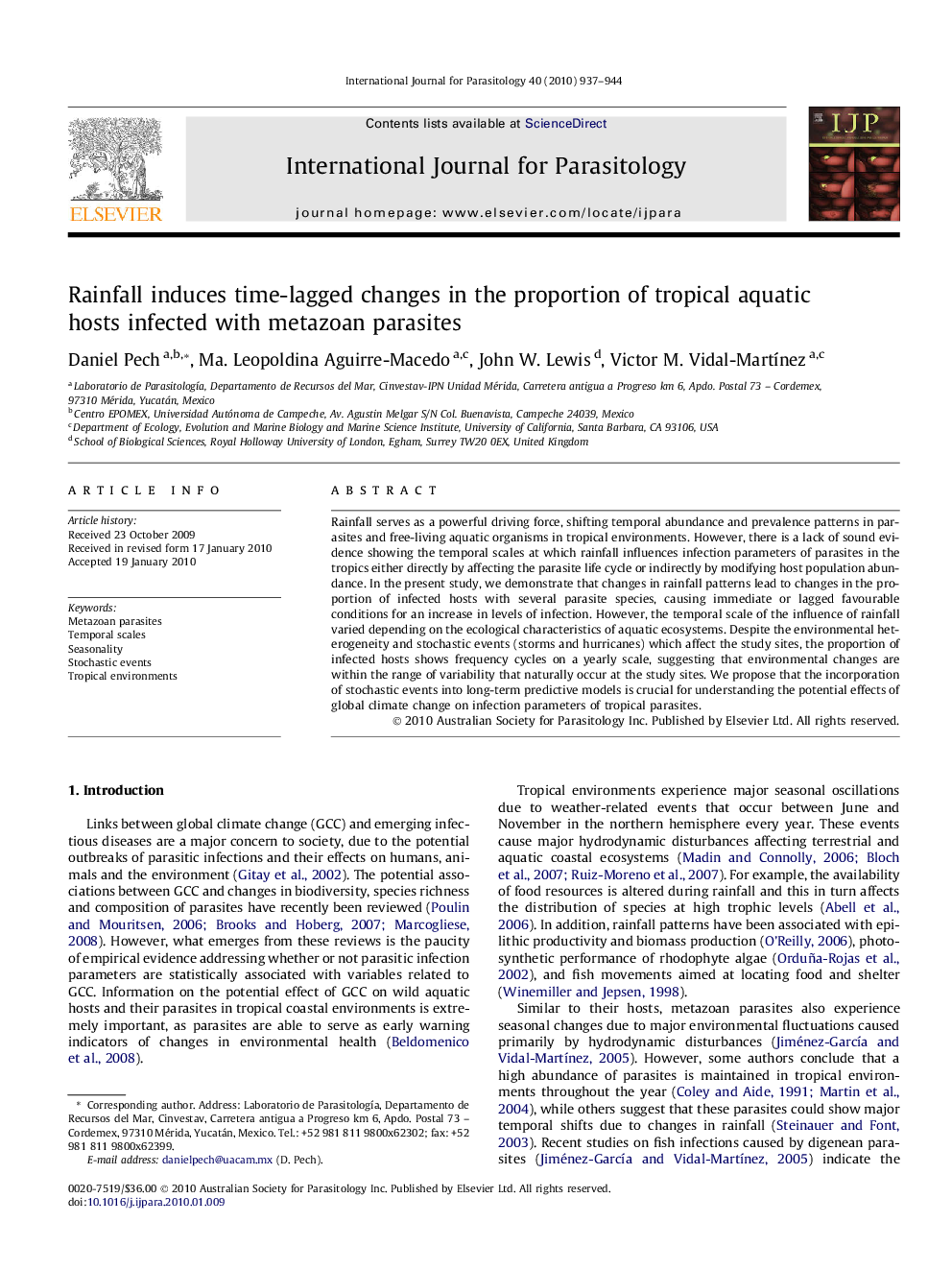| Article ID | Journal | Published Year | Pages | File Type |
|---|---|---|---|---|
| 2436433 | International Journal for Parasitology | 2010 | 8 Pages |
Rainfall serves as a powerful driving force, shifting temporal abundance and prevalence patterns in parasites and free-living aquatic organisms in tropical environments. However, there is a lack of sound evidence showing the temporal scales at which rainfall influences infection parameters of parasites in the tropics either directly by affecting the parasite life cycle or indirectly by modifying host population abundance. In the present study, we demonstrate that changes in rainfall patterns lead to changes in the proportion of infected hosts with several parasite species, causing immediate or lagged favourable conditions for an increase in levels of infection. However, the temporal scale of the influence of rainfall varied depending on the ecological characteristics of aquatic ecosystems. Despite the environmental heterogeneity and stochastic events (storms and hurricanes) which affect the study sites, the proportion of infected hosts shows frequency cycles on a yearly scale, suggesting that environmental changes are within the range of variability that naturally occur at the study sites. We propose that the incorporation of stochastic events into long-term predictive models is crucial for understanding the potential effects of global climate change on infection parameters of tropical parasites.
Graphical abstractFigure optionsDownload full-size imageDownload high-quality image (58 K)Download as PowerPoint slide
